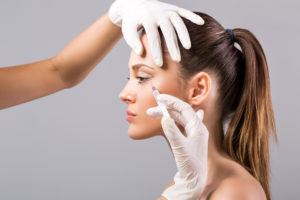When Botox Goes Bad
- Posted on: Feb 28 2018

Your resting face doesn’t look like “you.”
There are terms that describe the overuse of Botox around the eyes; “Spock brow, Caveman brow . . . “ No one wants these terms to describe an unnaturally high or low eyebrow resulting from muscle relaxation brought on by Botox. To inhibit this from happening, your experienced injector will closely observe the anatomy of your face, including the natural way that your muscles raise (if they do at all) to account for eyelid drooping. The same care is taken when Botox is injected into the mouth to correct downturned corners.
Muscle in adjacent areas is restricted.
The reason Botox works at all are because of its relaxing effect on muscles. However, too much relaxation – too much diffusion of product into adjacent areas – can disrupt natural movements. To minimize the risk of treating or adversely affecting the wrong muscles, experienced injectors take time getting to know the musculature of each patient’s face.
A template is used.
Templates: Kybella? Yes. Botox? No. Botox is not a one-size-fits-all treatment. For results to look good on your face, we need to know your face and how your muscles move. It’s that simple. If you find yourself face to face with an injector who isn’t observing your face, think again about going through with your injections.
An integral part of good Botox is taking time. Every patient is unique. We can say this, but what we value is following through with treating each patient as unique. For more information on Botox and how we perform this treatment, call our Midtown Manhattan dermatology office at (212) 391-8600.
Posted in: Botox

